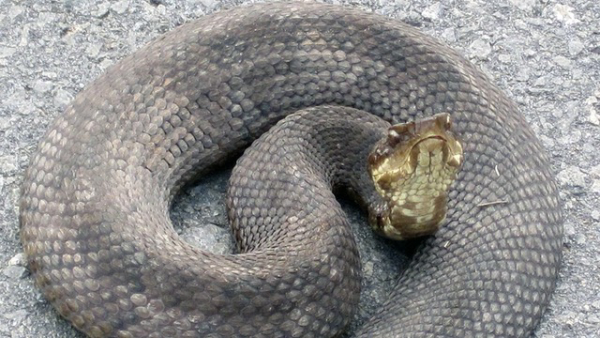
|
LITTLE ROCK — Lori Monday, regional educator with the Arkansas Game and Fish Commission, will present a free online workshop for anyone interested in learning how to identify venomous snakes native to The Natural State at 6 p.m. March 25.
Monday has held hundreds of workshops and school presentations on the enjoyable aspects of reptiles and amphibians in Arkansas but has tailored this online workshop specifically for people to learn the best ways to identify venomous snakes at a distance.
“With spring, we have a lot of people who are ready to get out and enjoy some fishing, bird-watching and turkey hunting,” Monday said. “But more than a few will express some fear of running across a venomous snake. We want to give people the tools they need to be safe and more confident in the woods and on the banks of our streams and rivers.”
Monday says some of the old standby methods of Identifying venomous snakes can mislead people and even put them at unnecessary risk.
“A common misconception is that all venomous snakes have slit or ‘cat’s eye’ pupils,” Monday said. “That may be true for rattlesnakes, copperheads and cottonmouths, but the coral snake which is a venomous snake native to Arkansas has round pupils. And if you’re close enough to tell what kind of pupil they have, you’re probably getting too close to the snake.”
Monday says other methods, such as looking for a broad head, also fall short of the whole story.
“Again, the venomous coral snake has a slender head and many nonvenomous watersnakes have broad heads or can flatten their heads out when threatened,” Monday said.
Monday’s program will focus on the six venomous species in Arkansas, and she will work through each species to help people keep their distance from those that pose a threat.
“For instance, the copperhead has a bold peach color and its pattern from the side looks like a Hershey’s kiss,” Monday said. “From the top, it’s an hourglass shape, but that view puts you too close for comfort. Instead, by knowing these two characteristics together, you’ll be able to spot that species and stay away. Each species I cover will have a group of characteristics that are pretty easy to remember.”
In addition to identification tips, Monday will share many more resources with workshop attendees, including information on general herpetology and what to do in the event of a snakebite.
It is illegal to kill snakes in Arkansas unless they pose an immediate threat to people, pets or property, and most cases of snakebites are the result of people accidentally stepping on an unseen snake or purposefully agitating or trying to kill it.
“It’s just a good idea to know which ones are harmful and let them have their space,” Monday said. “Aside from the legal issue, getting close enough to kill or move the snake puts you in danger. In cases where the snake may be near a home or where it could cause a threat to people, you can call someone who is trained to handle and relocate these animals safely and humanely.”
Monday says snakes, even venomous ones, have important roles to play. As a predator of mice and rats, snakes control rodent populations that can wreak havoc on the agricultural industry. They also can play a role in the medical field. The toxins in snake venom have had applications in treating strokes, heart attacks and other circulatory problems. Many modern blood pressure medicines were developed based on enzymes found in snake venom.
“Copperhead venom currently is being used in breast cancer research and treatments,” Monday said.